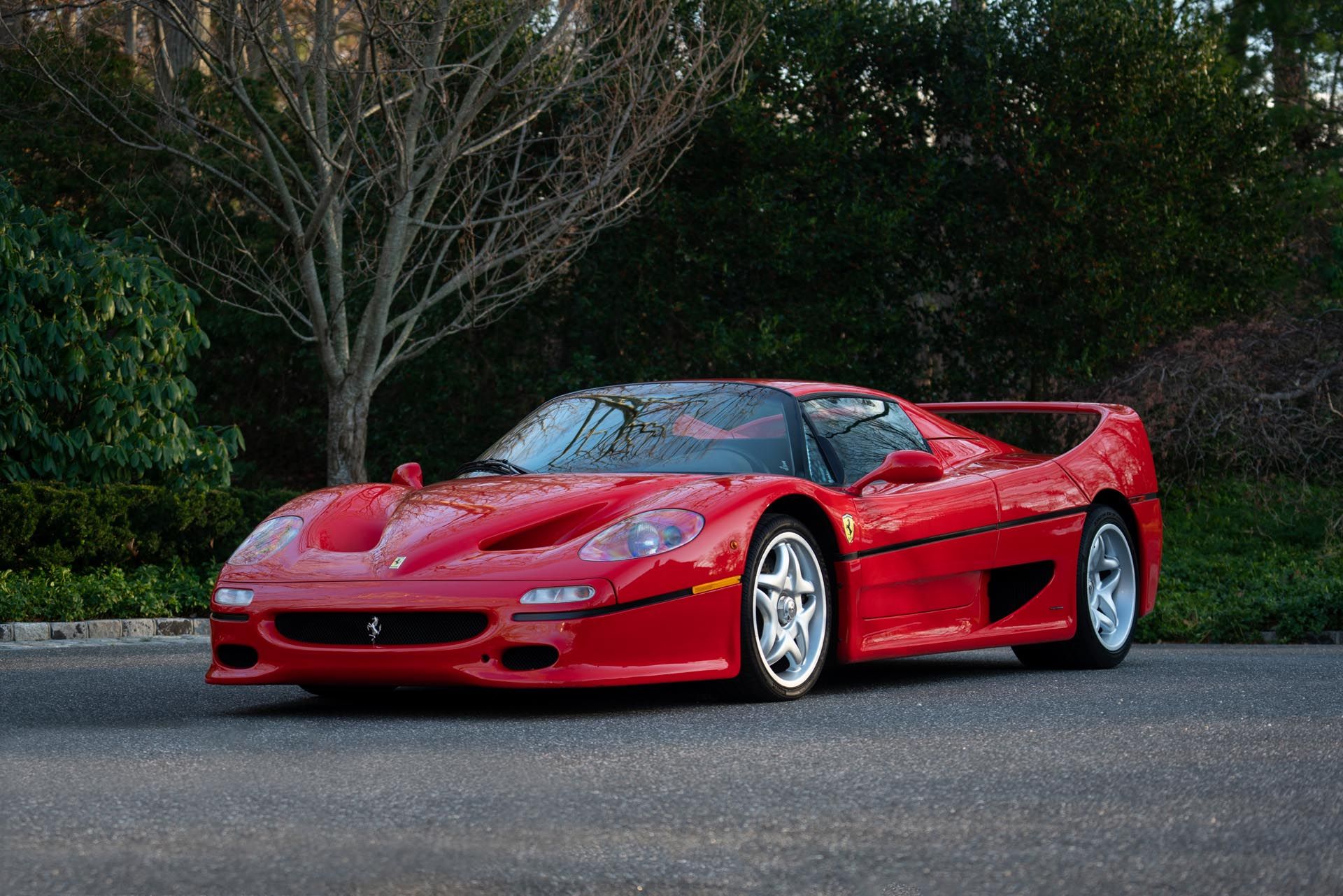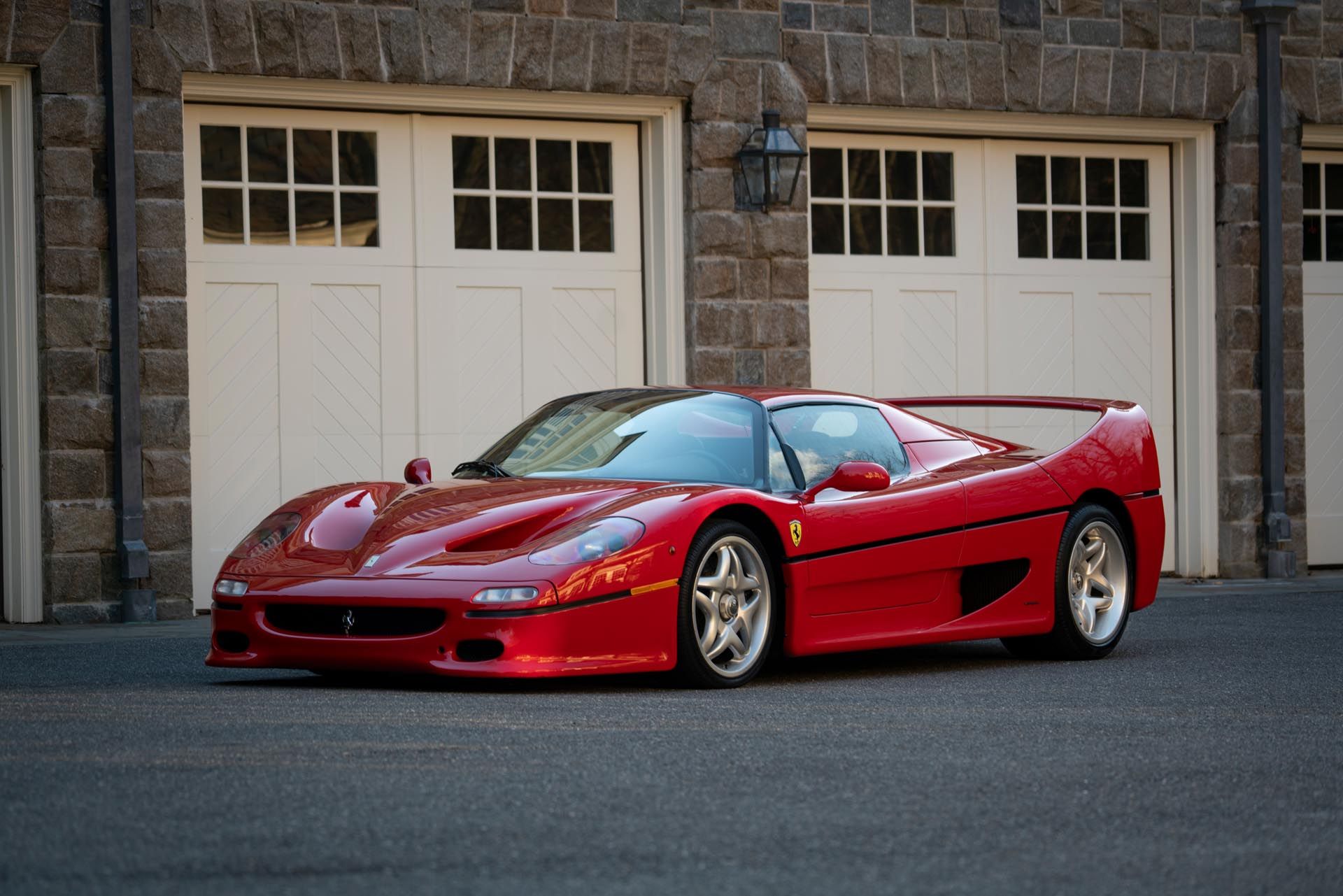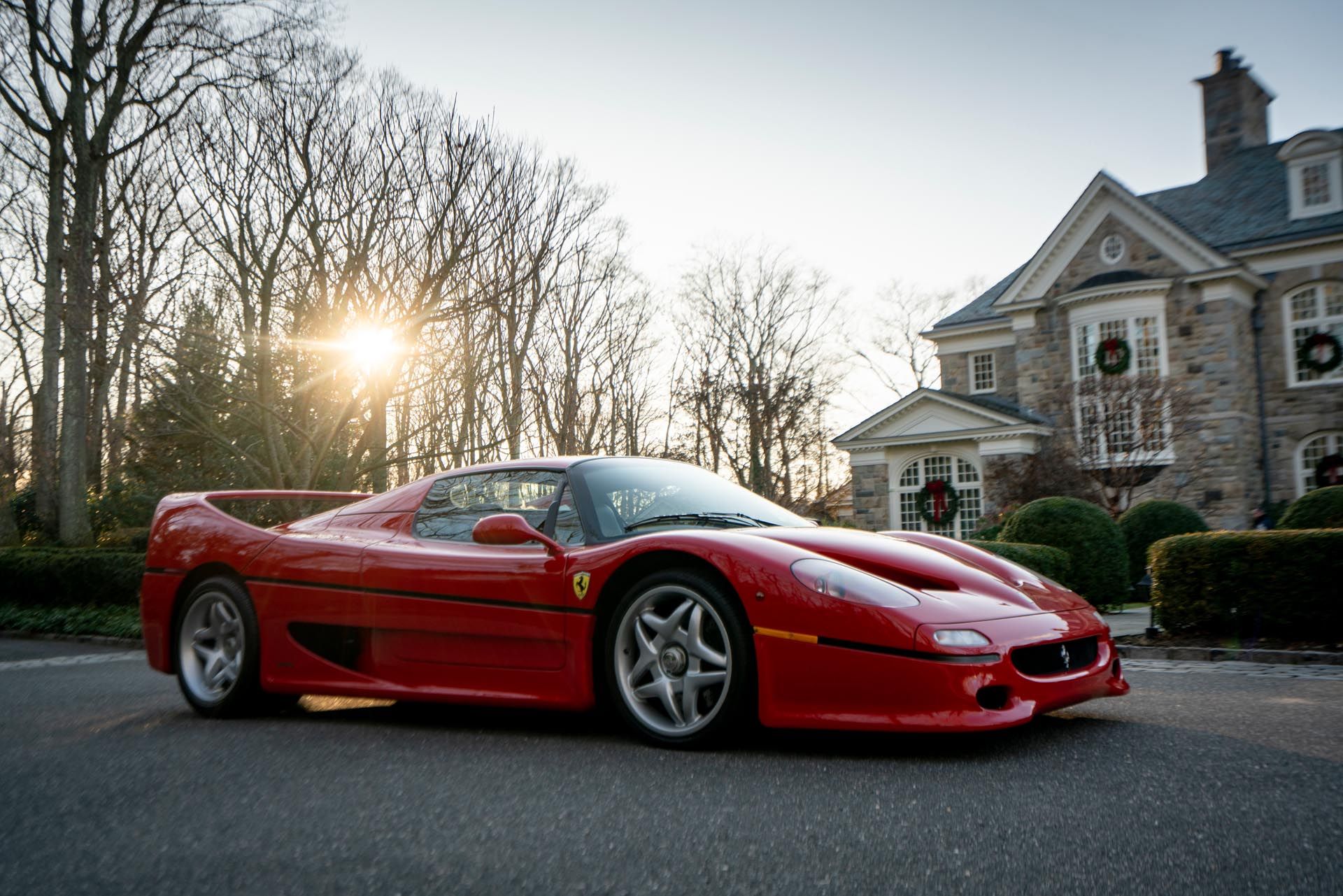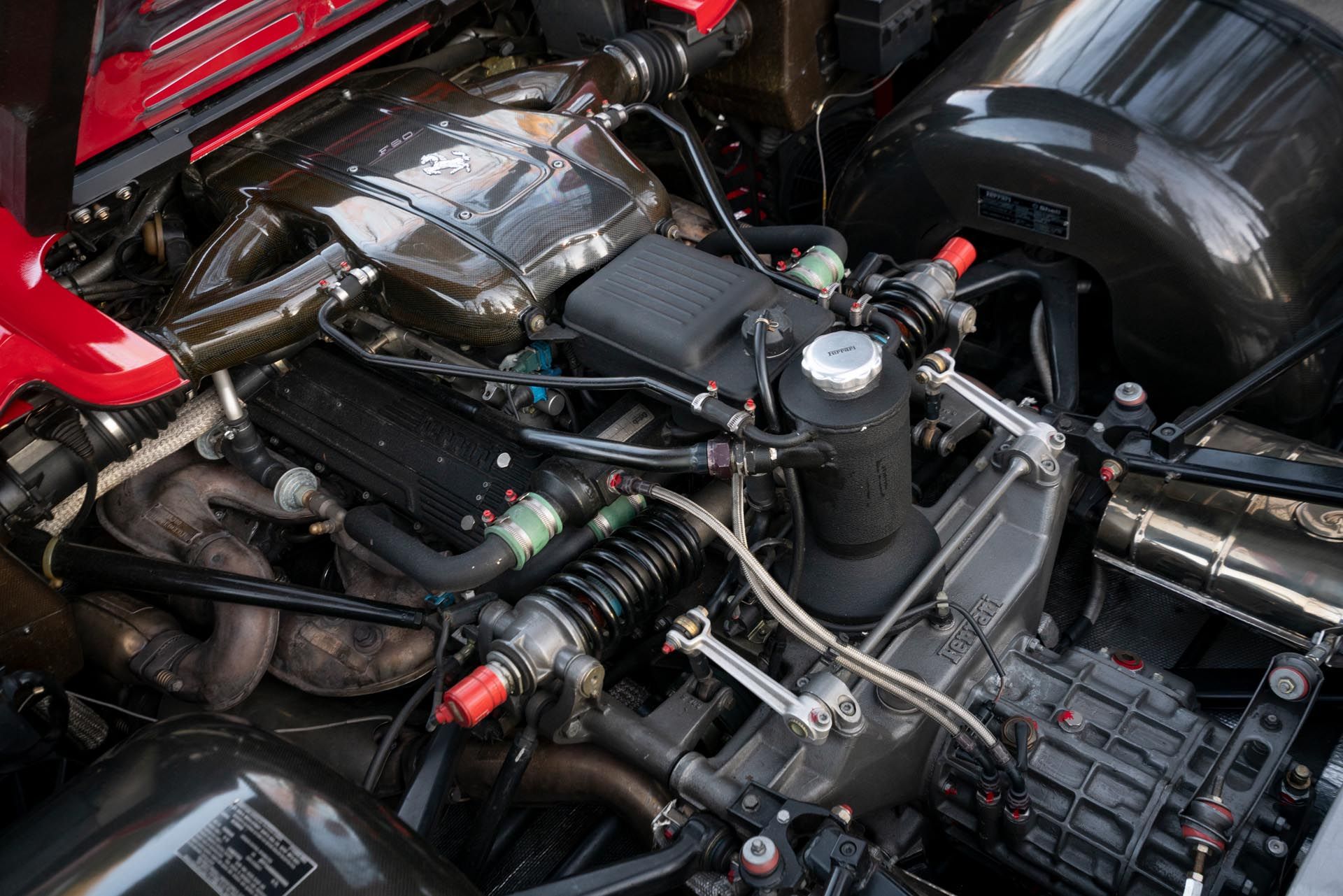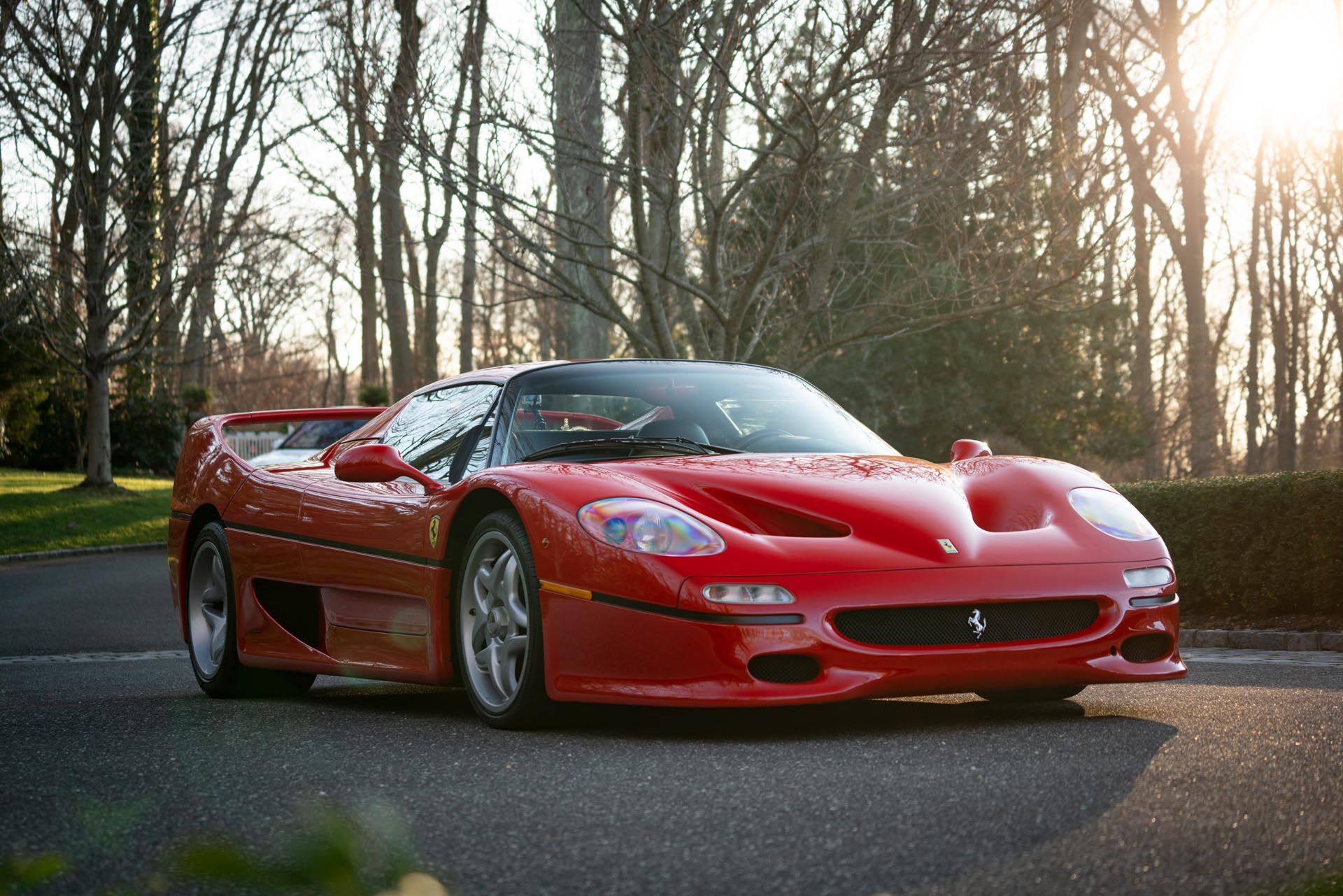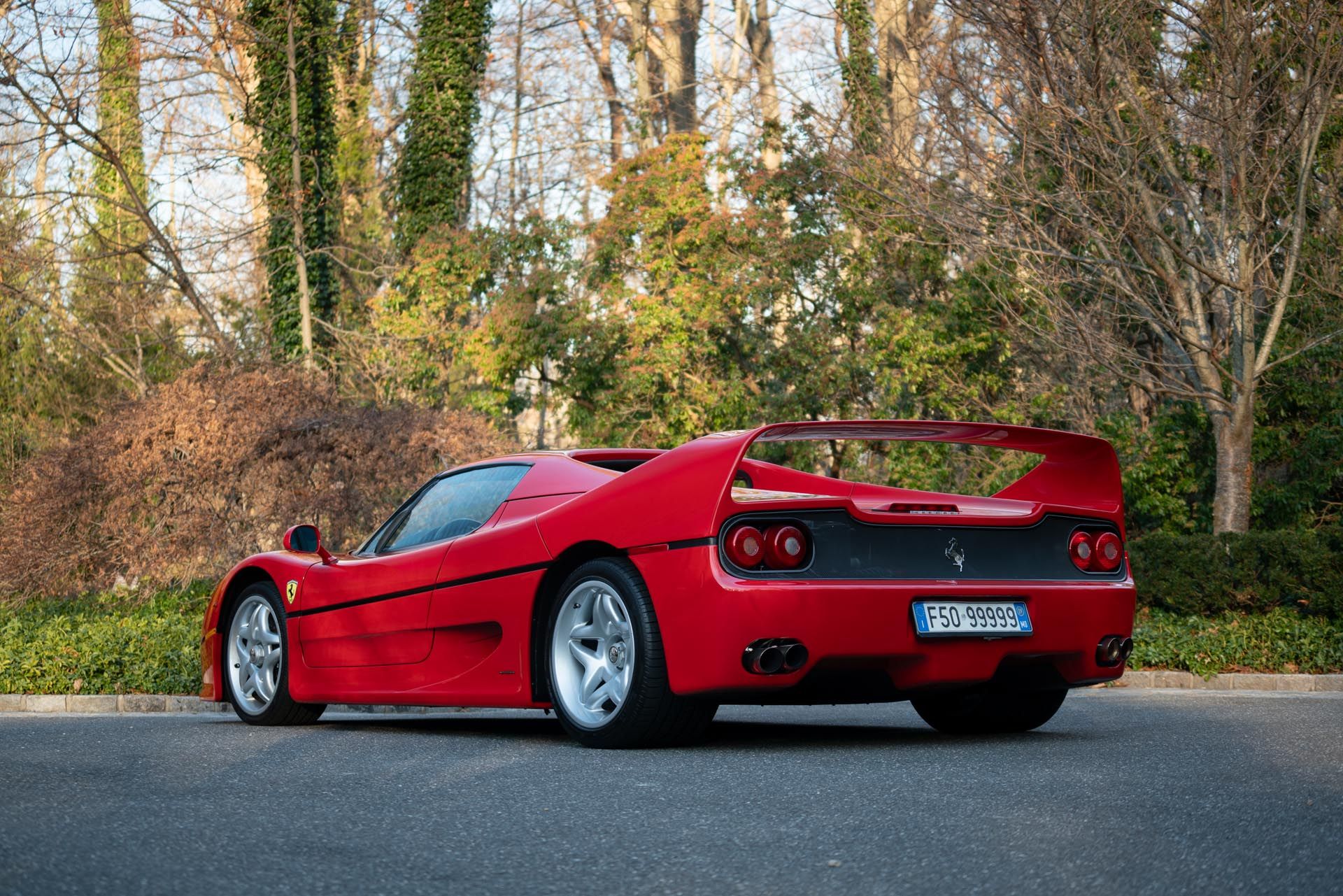It’s a very rare occasion when something as special as this 1995 Ferrari F50 Berlinetta Prototipo shows up with a for sale sign that’s open to the public. The F50 Berlinetta, in general, is special in its own right as Ferrari produced less than 350 examples over the course of its life, but this is, arguably, the most special of all. Keep reading to find out why.
The 1995 Ferrari F50 Prototipo is the First, and It Has History
For the uninitiated, “Prototipo” is Italian for prototype, and that’s exactly what this F50 Berlinetta is.
According to the car’s listing on Worldwide Auctioneers, it was the very model that was used for Shin Yoskikawa’s cut-away illustration. It was even sent around the world to be used in the development of scale models like those sold by Burago, Maisto, and Tamiya. Commemorative postage stamps were even based on this specific model.
Once F50 Berlinetta Prototipo was ready to retire from its world tour, Ferrari’s factory tore it down and gave it the attention it deserved – a full rebuild. From there, it was sold to Jacques Swaters, a personal friend of Enzo Ferrari and the man that was promised the car from the beginning. Swaters held on to the car for a decade until it was sold off in 2007 to a collector in Burbank, California. From there, it has exchanged several times but, as you can see from the images, it still looks as good as it did the day it rolled out of Ferrari’s factory the first or second time.
How’s that for history?
Is the Ferrari F50 Berlinetta Prototipo Different From other F50 Berlinettas?
To be honest, there’s nothing major that separates this F50 Berlinetta from the rest of the rather small crop that Ferrari Produced. Well, at least not in terms of aesthetics or technology.
Ferrari F50 specifications
|
Engine |
4.7-liter 60-valve V-12 |
|---|---|
|
Power (Horsepower) |
510 HP @ 8,500 RPM |
|
Torque (Pound-feet) |
345 LB-FT @ 6,500 RPM |
|
0-60 mph (Seconds) |
3.7 seconds |
|
Top Speed (MPH) |
202 mph |
With that kind of power on tap, and a curb weight that tipped the scale at just over 2,700 pounds, the Ferrari F50 Berlinetta was able to get to 60 mph in 3.7 seconds and topped out at 202 mph. Those figures make it still highly relevant today and even competitive with a lot of what the exotic market still has on offer.
Brief History of the Ferrari F50 Berlinetta
When this prototype was introduced at the 1995 Geneva Motor Show, Head of Ferrari, at the time – Luca di Montezemolo – spoke a slogan that has echoed throughout the chambers of time:
And, that’s wasn’t a joke. Ferrari’s racing history aside, all that experience went into the F50. As a successor to the Ferrari F40, the F50 naturally had to be better, but in this case, the F50 took all Ferrari’s F1 know-how and condensed it into street-legal form. Its construction featured a lightweight carbon fiber tub, wishbone suspension at all four corners, and that sculpted bodywork was developed exclusively inside a wind tunnel. That’s why the F50 is nowhere near as aggressive as the F40 – it was designed to be as aerodynamic as possible and light. Of course, that’s no surprise as the early and mid-1990s served as a temporal home for other great exotics like the McLaren F1 and Lamborghini Diablo VT.
A total of 349 examples of the Ferrari F50 Berlinetta were produced over the course of a couple of years, and this prototype is considered to be the most important road-legal F50 in existence. At one time it was even pushed to the max by drivers like Niki Lauda and Scuderia drivers like Gerhard Berger and test driver Dario Benuzzi. All documentation comes with this example when it crosses the auction block and its legitimacy is intact. No pricing estimate for it has been published, but a 1995 Ferrari F50 was sold by RM Auctions back in 2013 in Monterey at the price of $1.7 million and a 1997 model sold for less than half, $758,000, in 2013 at Villa Erba, somewhat close to the Ferrari factory. Given the very nature of this prototype, expect it to command at least $2 million at the auction block if not more.

